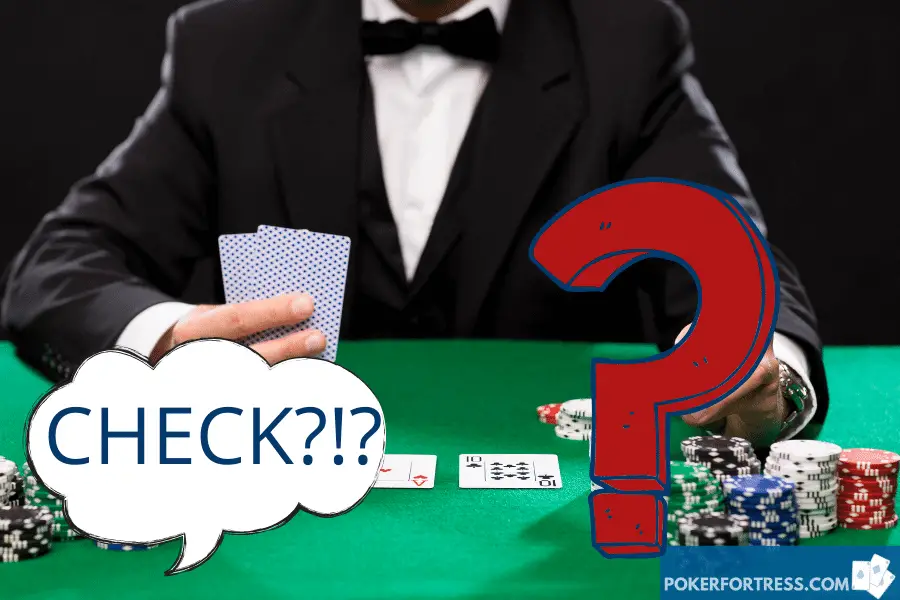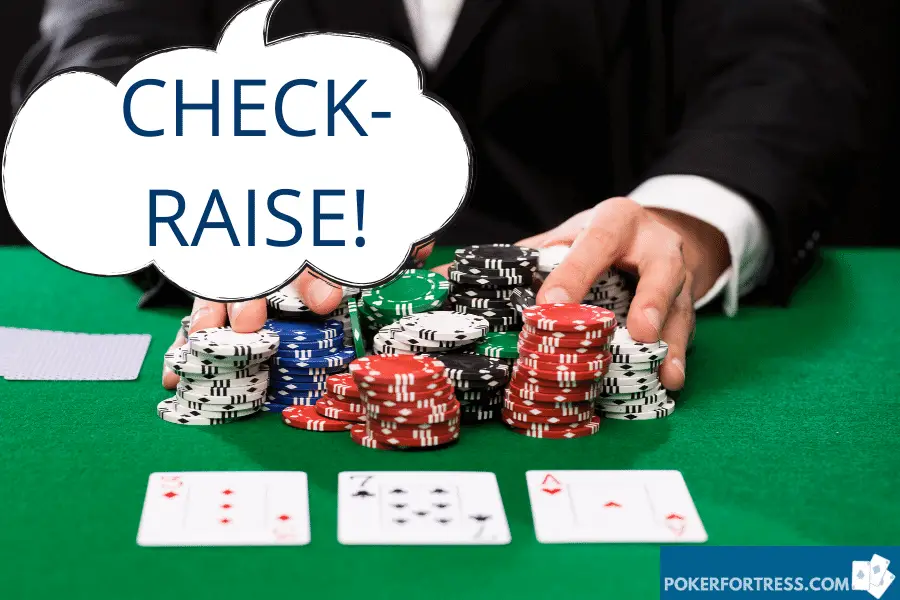If you’re new to poker, understanding when it’s right to check can take some time. With the conditions changing from pre-flop to post-flop, it’s okay to get it all mixed up. The first thing you learn is that after the blinds are posted, all players have the option to call, raise, or fold while the big blind can call, raise, fold, or check.
So, is checking a privilege only the big blind enjoys, or can other players check after the blinds? Below is all you need to know about checking after the blinds.

Can you check after the big blind? Depending on the scenario, it may or may not be legal to check after the big blind. When it’s the pre-flop round, you can only check when you’re the big blind. Any player that comes after the big blind does not have the option to check.
In subsequent rounds, however, players can check irrespective of their position.
Pre-flop only the big blind gets the option to check if no one has raised before. Post-flop, the option to check only is available to everyone as long as no one else has placed a bet before you on the table.
Checking is a key part of any player’s gameplay. For some, it’s their best play especially when they hold weak hands and are hoping for a card on the turn that improves their hand. For others, it’s crucial to building a bigger pot. Read on to find out how players incorporate checking in their gameplay.
Checking after the Big Blind
In the pre-flop round, the blinds make forced bets. Everyone else on the table will have the option to call the bet, fold to it, or raise it. Since no one else has placed a higher bet than the big blind at that point, only the big blind has the option to check.
In later rounds (post-flop), there are no forced bets. Anyone can check as long as no other person has placed a bet before them. If an opponent places a bet, you have to match the bet or raise it (call or raise). When the action comes back to you, and no one else has raised your bet, you have the option to check.
Why do Players Check?
Poker players check when they don’t want to place a bet. When it’s your turn to act during a hand, you have several options available to you. You can call the previous bet, raise the bet, or fold. If you made an earlier bet that hasn’t been raised, you’d have the option to check as well.
Checking simply means you don’t want to bet, but you also don’t want to fold either. So, you simply pass the action to the next player. A player may wish to check for the following reasons:
Pot Control
During the early days of poker, pot control was a popular topic when players talked about hand strength. To this day, the ”small hand, small pot. Big hand, big pot” legacy is still quite popular. The concept of pot control basically suggests that if you hit the flop with a weak hand, you should try and keep the pot size small.
If you do get lucky with a strong hand, you should be looking to build the pot and not pot control. You want to get paid when holding a strong hand.
There are two main ways players try to control pot size. They either reduce their bet size or check on the flop. This is more practicable when you’re the first to act on the flop. It means no one else has placed a bet before you, so you can simply check.
However, this strategy isn’t as popular as it used to be with many pros believing that checking doesn’t necessarily stop your opponent from betting. Also, checking could ruin the possibility of extracting better value on the river if you’re dealt a bad card, and your opponents get a game-changing card.
With bad river cards, there’s a strong chance your opponent can bluff you. Although, this doesn’t mean checking to control pot size is entirely fruitless, it just means you’d be better off employing a different strategy.
Check Raise

There was a time when the check-raise was the most potent strategy employed by players when they were trying to build a pot. Such was its popularity that many casinos placed a ban on it. A check-raise involves checking on the flop and then making a big raise when it’s your turn to act again in the same round.
Usually, players check-raise when they hold a strong hand. The idea is to try and lure an opponent into making a bet when you have reasons to believe the player won’t call a direct bet from you, or when they have a decent hand and not as strong as yours and you want to build the pot fast. So, when it’s your turn to act on the flop, you simply check with the hope that your opponent will place the bet.
If your prediction is spot on, you get to make a big raise that could induce your opponent to make the mistake of calling with a weaker hand.
A check-raise can also be used as a bluff. Regardless of your hand strength, you can knock opponents off pots using a check-raise. This is most effective when you call out of position in a heads up.
Since many players c-bet after raising pre-flop, a timed check-raise can turn the tables. This is why many pros encourage checking to the pre-flop aggressor. While a check-raise can be highly effective, it has its downsides, too. There’s always that chance that the opponent you’re trying to check-raise won’t bite. If the action is checked around the table, you run the risk of your opponent getting a free card that reduces your odds of winning the hand.
Note that a check-raise is only possible when you’re out of position as you first need to check before making a raise. Since there’s a chance that your check-raise can go south if your opponent checks, always be sure to check-raise a player who is aggressive and is willing to bet with a wide range of hands.
Final Thoughts
Unlike calling, raising, and folding, Checking is an option that’s only available on special conditions. In pre-flop rounds, only the big blind can check while everyone else has the opportunity to check on the flop. While the big blind can check pre-flop, that option is only applicable when no one has raised the blinds.
If an opponent raises or re-raise the blinds before it’s the big blind’s turn to act, the BB will only be able to call, raise or fold. Depending on your game strategy, checking can be a great weapon in your arsenal or not.
I’ve seen players who check to devastating effect, and I’ve also seen players who think checking is a weak move. I guess it’s a case of individual preferences.
Related questions
Can the small blind check pre-flop? No, the only player who is allowed to check pre-flop is the big blind. Like other players, the small blind can only call, raise, or fold pre-flop. However, if no one has placed a bet in subsequent streets, the small blind can check if he wants to. Note: It can check if nobody has raised yet and the small blind and big blind are the same, like in some 5/5 Live games.
What does it mean to check back in poker? A check back simply means checking when a player has checked before you. It’s just like tennis. When a player hits the ball to you, you have the opportunity to hit it back. The same goes for checking back in poker.
Is checking and folding similar? No, checking and folding are two different actions. When you check, you’re opting against making a bet, but you still want to continue a hand.




